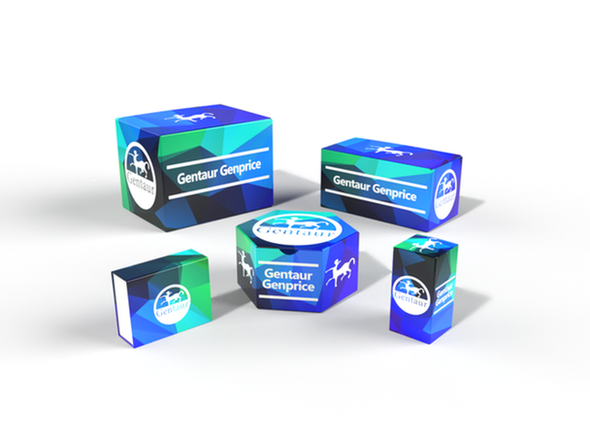749
Human Dickkopf-like protein 1 (DKKL1) ELISA Kit | KTE62037
- SKU:
- 749-KTE62037
- Availability:
- Usually ships in 5 working days
Description
Human Dickkopf-like protein 1 (DKKL1) ELISA Kit | KTE62037 | Gentaur UK, US & Europe Distribution
Application: This Human Dickkopf-like protein 1 (DKKL1) ELISA Kit employs a two-site sandwich ELISA to quantitate DKKL1 in samples. An antibody specific for DKKL1 has been pre-coated onto a microplate. Standards and samples are pipetted into the wells and anyDKKL1 present is bound by the immobilized antibody. After removing any unbound substances, a biotin-conjugated antibody specific for DKKL1 is added to the wells. After washing, Streptavidin conjugated Horseradish Peroxidase (HRP) is added to the wells. Following a wash to remove any unbound avidin-enzyme reagent, a substrate solution is added to the wells and color develops in proportion to the amount of DKKL1 bound in the initial step. The color development is stopped and the intensity of the color is measured.
Detection Method: Colorimetric
Conjugate: N/A
Sample Type: Cell culture supernatants#Serum#Plasma#Other biological fluids
Assay Type: Multiple steps standard sandwich ELISA assay with a working time of 3-5 hours. It depends on the experience of the operation person.
Kit Component: • Human Dickkopf-like protein 1 microplate
• Human Dickkopf-like protein 1 standard
• Human Dickkopf-like protein 1 detect antibody
• Streptavidin-HRP
• Standard diluent
• Assay buffer
• HRP substrate
• Stop solution
• Wash buffer
• Plate covers
Features & Benefits: Human Dickkopf-like protein 1 (DKKL1) ELISA Kit has high sensitivity and excellent specificity for detection of Human DKKL1. No significant cross-reactivity or interference between Human DKKL1 and analogues was observed.
Calibration Range: Please inquire
Limit Of Detection: Please inquire
Usage Note: • Do not mix components from different kit lots or use reagents beyond the kit expiration date.
• Allow all reagents to warm to room temperature for at least 30 minutes before opening.
• Pre-rinse the pipet tip with reagent, use fresh pipet tips for each sample, standard and reagent to avoid contamination.
• Unused wells must be kept desiccated at 4 °C in the sealed bag provided.
• Mix Thoroughly is very important for the result. It is recommended using low frequency oscillator or slight hand shaking every 10 minutes.
• It is recommended that all samples and standards be assayed in duplicate or triplicate.
Storage Instruction: The unopened kit should be stored at 2 - 8°C. After opening, please store refer to protocols.
Shipping: Gel pack with blue ice.
Precaution The product listed herein is for research use only and is not intended for use in human or clinical diagnosis. Suggested applications of our products are not recommendations to use our products in violation of any patent or as a license. We cannot be responsible for patent infringements or other violations that may occur with the use of this product.
Background: The deduced 242-amino acid SGY protein, which is 22% identical to DKK3 and 59% identical to the mouse Sgy sequence, possesses 2 potential N-glycosylation sites. Northern blot and in situ hybridization analysis revealed expression of a 1.0-kb Sgy transcript in adult mouse testis and day-11 and -15 embryos. Western blot analysis showed that SGY is secreted as a 40- to 50-kD protein; deglycosylation reduced the protein by 5 to 10 kD. Functional analysis determined that SGY does not block Xenopus Wnt8, Wnt3a, or Wnt2b induction of a secondary axis in frog embryos. Scott (2000) mapped the SGY gene to chromosome 19 based on sequence similarity between the SGY sequence and the chromosome 19 clones LLNLR-254A7 and LLNLR-278H5 .
Alternative Names: DKKL1; CT34; SGY; SGY-1; SGY1; cancer/testis antigen 34; dickkopf-like 1; soggy-1
Search name: DKKL1; CT34; SGY; SGY-1; SGY1; cancer/testis antigen 34; dickkopf-like 1; soggy-1
Tag: DKKL1






